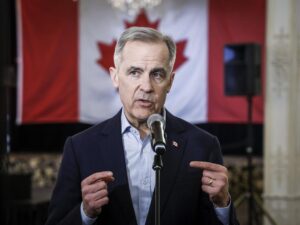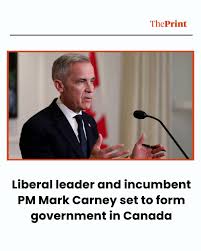
In a surprising turn of events, Canada’s 2025 federal election culminated in a projected victory for the Liberal Party, now under the leadership of Mark Carney. Despite earlier forecasts favoring the Conservatives, the Liberals are poised to form their fourth consecutive government. As of late Monday night, the Liberals had secured approximately 160 seats, just shy of the 172 needed for a majority in the 338-seat House of Commons.
Background
The political landscape leading up to the election was tumultuous. Prime Minister Justin Trudeau’s resignation in January 2025, following declining public support and internal party challenges, left the Liberals in a precarious position. Mark Carney, former Governor of the Bank of Canada and the Bank of England, assumed leadership of the Liberal Party in March 2025. His decision to call a snap election shortly after taking the helm was seen as a bold move to solidify his mandate.
Key Issues and Campaign Dynamics
A significant factor influencing the election was the escalating trade dispute with U.S. President Donald Trump. Trump’s imposition of tariffs on Canadian goods and provocative remarks about Canada’s sovereignty, including suggestions of annexation, ignited a wave of nationalism across the country. Carney’s firm stance against these threats resonated with voters, shifting the campaign narrative and bolstering Liberal support.
Conservative leader Pierre Poilievre, initially the frontrunner, focused his campaign on domestic issues such as the cost of living and housing. However, his approach was overshadowed by the nationalistic fervor spurred by external threats, leading to a decline in his party’s momentum.

Election Results
The Liberals’ projected win, with around 160 seats, marks a significant comeback from earlier polls that had them trailing. The Conservatives are expected to secure approximately 111 seats, while the Bloc Québécois and the New Democratic Party (NDP) are projected to win 33 and 24 seats, respectively. The final seat count will determine whether the Liberals can form a majority government or will need to seek support from other parties.
Implications and Future Outlook
Carney’s victory signals a potential shift in Canada’s political and economic strategies, particularly concerning international trade and climate policy. His background in global finance may influence a more assertive approach to economic diplomacy and sustainable development. Domestically, the election results reflect a populace responsive to leadership that addresses both national identity and external challenges.
Conclusion
The 2025 federal election underscores the dynamic nature of Canadian politics, where leadership changes and international events can rapidly alter electoral outcomes. Mark Carney’s ascent to Prime Minister, amid rising nationalism and economic uncertainty, demonstrates the electorate’s desire for experienced leadership capable of navigating complex global issues. As the new government forms, attention will focus on how Carney translates his campaign promises into actionable policies that address both domestic concerns and Canada’s position on the world stage.







Add comment